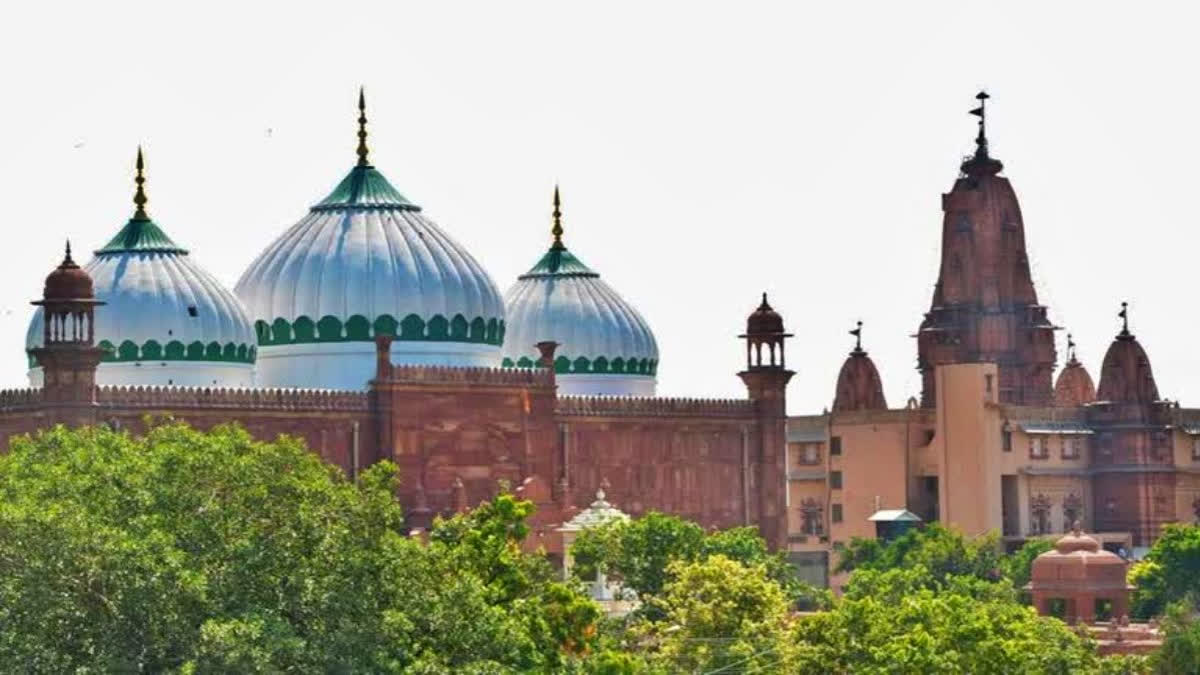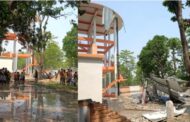New Delhi. There has been a new twist in the Sri Krishna Janmabhoomi Shahi Idgah case in Mathura. The Muslim side has approached the Supreme Court against the Hindu side’s claim that Shahi Idgah is an ASI protected monument. The Injatamiya Committee of Shahi Masjid Idgah has filed a special leave petition in the Supreme Court challenging the Allahabad High Court’s decision of March 5.
The High Court, while accepting the petition filed on behalf of Lord Sri Krishna Virajman, had allowed amendments to the original suit (the original suit claiming Shahi Idgah) and inclusion of the fact of declaring Shahi Idgah as an AAI protected monument.
Challenge to the High Court’s order in SC
Along with this, the High Court had also given permission to make Archaeological Survey of India (ASI) and the Central Government as parties. The Masjid Committee, in a petition filed in the Supreme Court, has challenged the High Court’s order and said that this has changed the nature of the original suit and not only this, it also negates the arguments of the Masjid Committee regarding the question raised on the hearing of the original suit on the basis of the Places of Worship Act.
This petition was listed for hearing in the Supreme Court on Friday, on which the court decided to consider it on April 8 and postponed the hearing. Apart from this, the Supreme Court has also issued notice to the Hindu parties on Friday on the demand to reinstate the petition of the Masjid Committee challenging the High Court’s order to attach all the cases for hearing together.
On Friday, both the petitions were listed for hearing before a bench headed by Chief Justice Sanjeev Khanna. The CJI told senior advocate Tasneem Ahmadi, appearing on behalf of the Masjid Committee, that the High Court has only accepted the petition for amendment in the petition. You debate on it. What is wrong in the order of the High Court.
Justice Khanna said that as far as the question is concerned whether the ASI protected site can be used as a mosque or not, this question is pending in the Supreme Court, and in that case the court had ordered that no effective order would be issued. You did not tell this to the High Court. This will have to be considered on the basis of the merits of the other case.
Application of Hindu side
It is known that the application of the Hindu side in the High Court was based on the claim that the Places of Worship Act will not be applicable on the ASI protected monument. During the hearing, the Chief Justice also told Ahmadi that you have the right to amend the complaint and make parties parties. Whether any party will be considered with retrospective effect or not is a separate issue.
The bench said that they can also amend the petition and raise this issue on the basis that the Places of Worship Act will not be applicable. The order of the High Court seems right. This is not a new case. When you present a new defense, they have the right to challenge it. When Ahmadi said that the implication of this case should be understood.
They wanted to put forward their arguments but the court said that it will hear it on April 8. The High Court’s decision to accept the Hindu side’s plea and amend the original suit and allow the ASI and the Central Government to be added as parties brings an important turn in this case because according to the Masjid Committee, by doing so, the legal grounds raised by the committee on the admissibility of the original suit by citing the Places of Worship Act are eliminated.
By declaring the monument as ASI protected, the nature of the original suit changes. The Masjid Committee is giving the same argument in the Supreme Court. It also says that its appeal questioning the admissibility of the original suit is still pending in the Supreme Court, while in the meantime the High Court has given permission to amend the original suit.
On Friday, Vishnu Shankar Jain, the lawyer appearing on behalf of the Hindu side, told the court that the issue is pending in the court that the Places of Worship Act does not apply to the ASI protected monument. An application was filed in the High Court on behalf of Lord Shri Krishna Virajman seeking permission to amend the original suit, claiming that Shahi Masjid Idgah was declared a protected monument in 1920 through a notification issued by the Lieutenant Governor of the United Province.
This notification was issued under Section 3 of the Ancient Monuments Protection Act. As a result, the Places of Worship Act 1991 will not be applicable in the present case. He had also presented documents for this, on seeing which the High Court accepted the application. It is known that the Places of Worship Act 1991 says that the religious places will have the same status as they had on 15 August 1947, no change can be made in their character.






